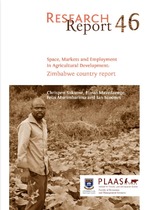| dc.description.abstract | Since independence in 1980, Zimbabwe has undergone several phases of land redistribution,
generally to communal and working people. The latest phase was the Fast-Track Land Reform
Programme (FTLRP), which began in 2000 and redistributed 10.82 million hectares of land to 168 671
mainly small-scale producers (Moyo 2011). The result has been a major transformation of the farming
landscape, with large-scale farms and ranches giving way to multiple smaller farms in an array of
sizes.
However, land reform on its own is not a cure for all rural economic development challenges. Land
redistribution addresses the problem of land access – a key resource in generating farm-based
employment and income – but, in addition, there is the need to create non-farm employment within
the new rural spaces. This is an issue of central importance for agricultural development policy: not
only because there are many people in rural areas who are landless or not involved in agricultural
production, and who, therefore, do not benefit directly from land reform provisions, but also because
large-scale agricultural investment projects, and increases in the productivity and efficiency of
agriculture, may lead to people being displaced from land. Internationally, the existence of a large
and growing population of landless and unemployed people, no longer involved in agriculture but
unable to find a foothold in the non-farm economy, seriously compromises poverty reduction, food
security, well-being and stability. Yet, the impact of agricultural development decisions on non-farm
employment is often disregarded by policy-makers, who assume that those not finding employment in
agriculture can be absorbed into the economy in other ways. | en_US |

